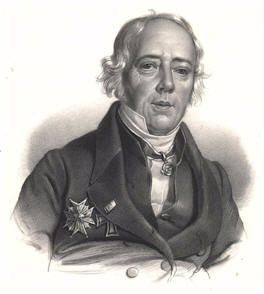Hans Kjerstien Ost was a Danish physicist, chemist and man of letters. In physics, he was the first to discover that an electric current in a current-carrying wire exerts a force on a magnetic needle, causing it to change direction. In chemistry, he discovered the element aluminum.In the late 19th century, his writing allowed for a more embryonic post-Kantian philosophy and evolution in science. He coined the term "Gedanken experiment" and was the first modern thinker to explicitly describe a Gedanken experiment.
 Hans Christian Ørsted (1777-1851) was a distinguished Danish physicist and chemist who is credited with some of the most important scientific contributions of his time, including the discovery of electromagnetism.
Hans Christian Ørsted (1777-1851) was a distinguished Danish physicist and chemist who is credited with some of the most important scientific contributions of his time, including the discovery of electromagnetism.
Ørsted – whose name is commonly spelled Oersted by English speakers – was born August 14, 1777, in Rudkøbing, a village on the island of Langeland, Denmark. His father was a practicing pharmacist, and while helping in the family business as a youngster Ørsted was first introduced to chemistry and science. Ørsted studied French, German, and Latin as a youth, and at age 17 entered the University of Copenhagen to major in philosophy and science. He was particularly influenced by the ideas of the German philosophers Immanuel Kant and Friedrich W. Schelling. Ørsted earned an undergraduate degree in pharmacy, graduating with honors, and then in 1799 he was awarded a Doctor of Philosophy.
Alessandro Volta discovered the galvanic battery in 1800, and this inspired Ørsted to ponder the nature of electricity and conduct his first electrical research experiments. Between 1800 and 1803 Ørsted traveled and lectured, visiting Germany, France, and Holland. Returning to the University of Copenhagen he accepted a position teaching medicine. Professor Ørsted would remain on the faculty of the University of Copenhagen for the remainder of his life.
In 1812 he returned to Germany and France, and while doing research in Berlin he wrote a paper describing the relationship between chemical and electrical forces. The ideas expressed in the essay formed a theoretical foundation for future experiments that eventually led to his most famous scientific contribution.
In the spring of 1820, while conducting experiments and performing classroom demonstrations for the benefit of his university students, Ørsted placed an electrically charged wire near a compass, causing the needle on the compass to swerve, deflected at a right angle. The observation of this phenomenon clearly established a relationship between magnetism and electricity, and through a series of subsequent experiments Ørsted became the first to identify the force of electromagnetism.
Although he made no attempt to explain electromagnetic presence through mathematical formulas, Ørsted was credited with its discovery. Following this historic breakthrough, the pioneering field of electromagnetic study rapidly evolved, accompanied by a surge of new theories and fresh technological applications.
Five years after discovering electromagnetism Ørsted made a monumental find in the field of chemistry, when he became the first person to capture the element aluminum. Although aluminum is one of the most plentiful elements on earth, it is always combined with other elements. Many chemists who came before Ørsted thought it existed but failed in their attempts to actually uncover it. He was the first to successfully distinguish it from other chemical compounds and positively identify and extract it as a unique element.
One of Ørsted's goals was to make science more popular with the general public, not just the academic and scientific community. He often submitted articles to newspapers and magazines or gave public lectures on scientific subjects to help teach people the relevance of science. A distinguished scholar, Ørsted was Secretary of the Royal Society of Sciences in Copenhagen, a Knight of the Prussian Order of Merit, and a member of the French Legion of Honor.
In November of 1850 the government of Denmark declared a national holiday in honor of Ørsted and his work at the University of Copenhagen. Four months later, on March 9, 1851, Ørsted died in Copenhagen and his funeral was attended by all of the leading public and private figures of the Danish capital. >
The term "oersted" was named after Hans Christian Ørsted and is used to define a unit of magnetic field strength equal to 79.58 amperes per meter.
In 1825 he made a significant contribution to chemistry by producing aluminum for the first time.
The discovery of the magnetic effect of electric currents by Auster was a major discovery in the history of science, and it immediately attracted the attention of those who understood its importance and value. This major discovery was followed by a series of new discoveries in quick succession. Two months later, Ampere discovered the interaction of electric currents, Arago made the first electromagnet, Schweiger invented the galvanometer and so on. Ampere once wrote: "Mr. Auster has forever associated his name with a new era..." Auster's discovery opened a new era in the history of physics.





